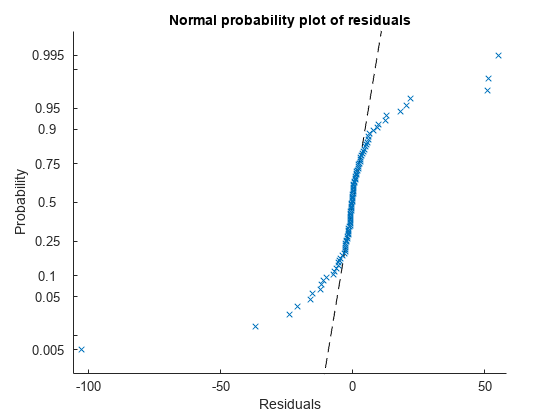plotResiduals
一般化線形回帰モデルの残差プロット
構文
説明
plotResiduals( では、1 つ以上の名前と値のペアの引数を使用して追加オプションを指定します。たとえば、残差のタイプや、残差のデータ点のグラフィック プロパティを指定できます。mdl,plottype,Name,Value)
h = plotResiduals(___)h を使用します。プロパティの一覧については、Line のプロパティ および Patch のプロパティ を参照してください。
例
入力引数
名前と値の引数
出力引数
詳細
ヒント
データ カーソルを使用すると、選択したプロットの点の値がデータ ヒント (データ点の横にある小さいテキスト ボックス) に表示されます。データ ヒントには、選択した点の x 軸および y 軸の値と、観測値の名前または番号が含まれます。
代替機能
GeneralizedLinearModel オブジェクトには、複数のプロット関数が用意されています。
モデルを検証するときに、問題があるデータを探し、各観測値の効果を理解するには、
plotDiagnosticsを使用します。また、モデルの残差を分析するには、plotResidualsを使用します。モデルを当てはめた後で、特定の予測子の効果を理解するには、
plotPartialDependenceを使用します。また、予測曲面を通るスライスをプロットするには、plotSliceを使用します。



























